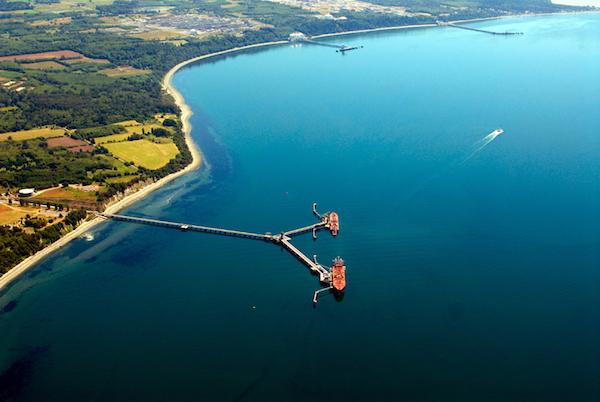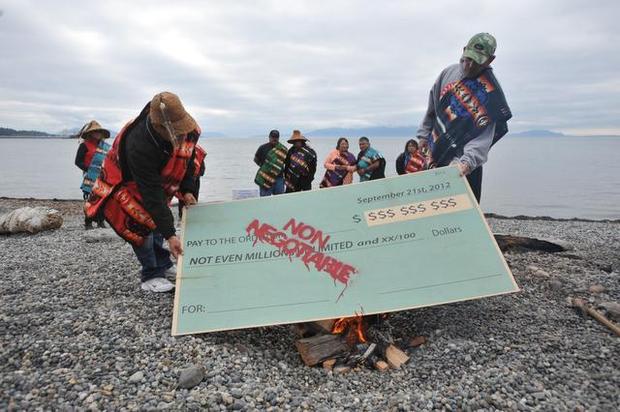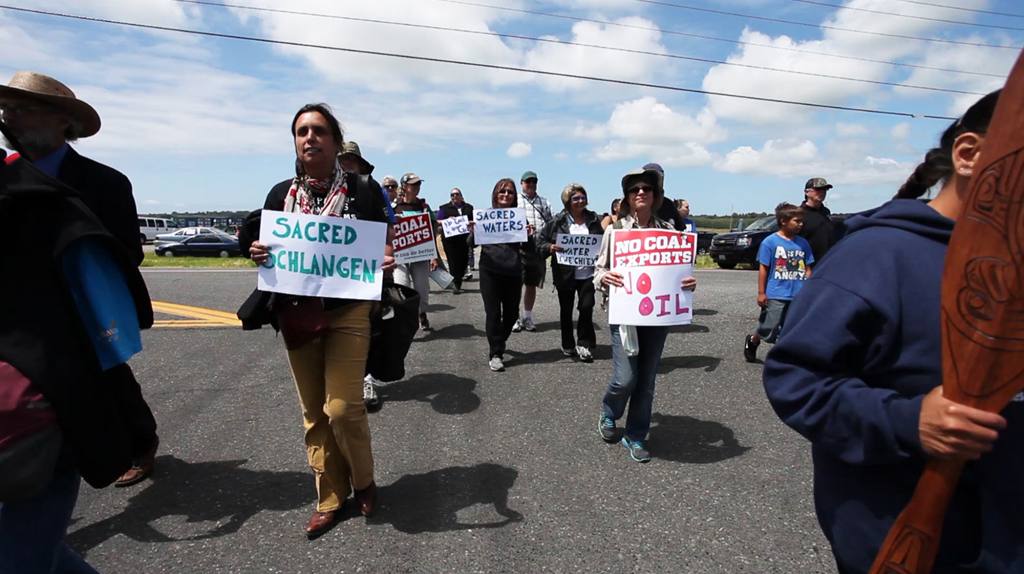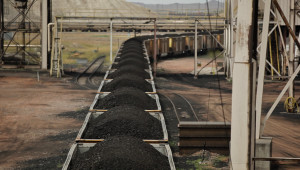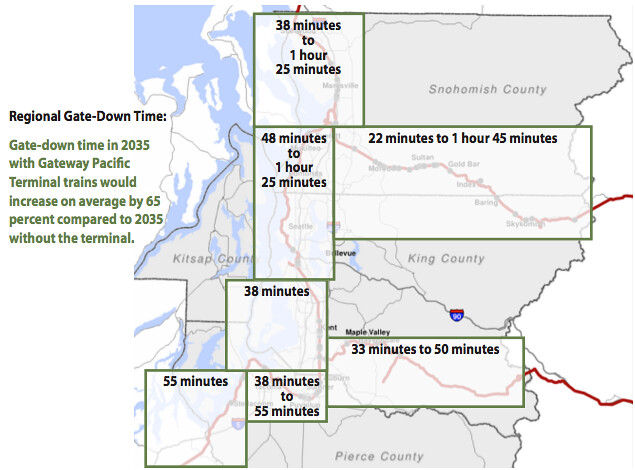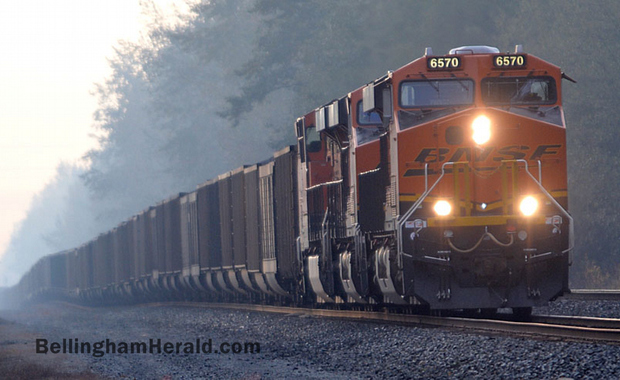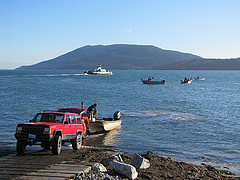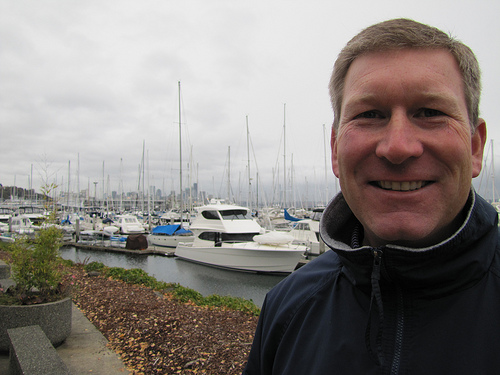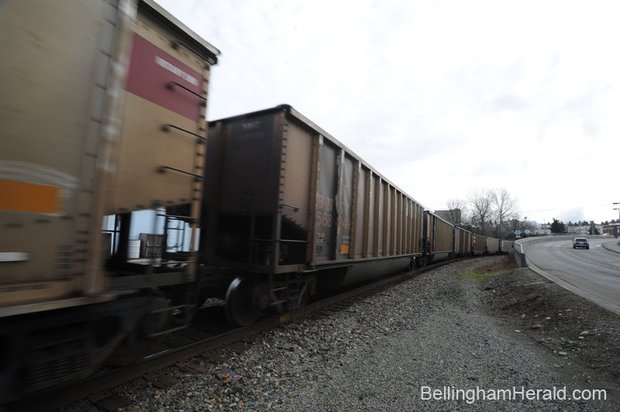BY RALPH SCHWARTZ, The Bellingham Herald
A nonprofit with close ties to a proposed coal terminal at Cherry Point is telling local and federal agencies that Lummi Nation plans to take over part or all of Cherry Point in an effort to “de-industrialize” an area that already includes two oil refineries and an aluminum smelter.
Lummi Chairman Tim Ballew called the claim a fabrication and a distraction from the tribe’s effort to halt Gateway Pacific Terminal through an exercise of its treaty rights to fish near Cherry Point and elsewhere in north Puget Sound.
“There’s just no way they could be blowing the cover on some plan we don’t have,” Ballew said.
Northwest Jobs Alliance wrote to the Whatcom County Planning Commission and the U.S. Army Corps of Engineers last month, asking them to oppose a tribal takeover of Cherry Point.
“It has come to our attention that there are those who would de-industrialize the Cherry Point (industrial area), but this rather radical notion would not serve the public interest,” the Alliance wrote in an Aug. 12 letter to the Planning Commission. The letter was signed by Chairman John Huntley and President Brad Owens.
Not named in the letter was Craig Cole, who is listed in the state’s corporations database as the director of the Northwest Jobs Alliance. Cole also was hired to do public relations for Gateway Pacific Terminal’s proponent, SSA Marine.
Cole said on Friday, Sept. 11, he is one of more than 100 members of the Alliance.
“I am one of the directors and support its focus on family-wage job growth and retention,” Cole said, along with “the continued viability of the Cherry Point industrial area.”
The Alliance delivered its message to the public in a press release on Thursday, Sept. 10.
The release refers to “a plan by the Lummi Nation to annex Cherry Point to its reservation.” The Alliance equivocates on just how much land it believes the tribe would take, but in some of its statements the group assumes the worst.
“It would decimate the job and tax base of the county, in particular the budgets of the Ferndale and Blaine school districts and Fire District 7, for which Cherry Point industries carry much of the tax load,” Huntley said in the release.
“While the Lummi people themselves and their treaty rights deserve great respect, this ploy to snatch nontribal land is just plain wrong,” the Alliance said in an Aug. 20 letter to the Corps.
The Alliance points to a single page that it claims is a “Lummi Nation planning document” from 2012. The page describes a strategy that includes defeating the coal terminal, acquiring Cherry Point and placing it in trust.
Tribes can ask the federal government to acquire properties and hold them in trust for tribal use, even land outside a tribe’s reservation.
Lummi Chairman Ballew reviewed the document and said it did not come from the tribe.
“What they presented definitely has not been produced by the Nation,” he said.
Owens didn’t answer directly when asked by a reporter if the Alliance believed Lummi Nation wanted to tear down existing industries at Cherry Point.
“The indicators are that they’re in opposition to growth at Cherry Point, and that their goal is to acquire Cherry Point property and have it placed in trust,” Owens said.
Cole said the documented evidence of the tribe’s intentions said “in an unambiguous way” that the tribe is intent on taking Cherry Point land.
“Some of it is pretty direct,” he said.
Documents used by the Alliance to support its claim include a 2012 resolution by the Lummi Indian Business Council to acquire Cherry Point “in order to prevent any further projects” and protect the cultural value of the area “in perpetuity.”
The only property specifically mentioned by the tribe for acquisition was the terminal site, and only after the coal terminal project was defeated. The documents say any acquisition of the terminal site would happen through negotiations with its owner, SSA Marine — not through a forceful snatching of the land, as the Alliance stated.
Ballew, who was not chairman when the 2012 ordinance was approved but sat on the council, acknowledged that acquiring a portion of Cherry Point was “a part of the operative part of the resolution.”
“But the more significant policy statement in that resolution is to protect the site,” Ballew said. “That doesn’t mean necessarily that the tribe acquires the land.”
“As far as I know the property isn’t for sale, and we haven’t taken that into consideration,” he said.
Ballew emphasized the importance of protecting the tribe’s cultural heritage at the coal terminal location, which he said was the site of an ancestral village. For now, he said, the tribe is focused on protecting its fishing rights through its request to the Corps to stop Gateway Pacific Terminal.
“They’re fabricating a false conspiracy,” Ballew said. “This is a distraction to our request to the Corps to protect our treaty rights.”
The tribe says the terminal pier and up to 487 ships per year traveling to and from the port would do irreparable harm to tribal fishing. At full capacity, Gateway Pacific Terminal would export 48 million metric tons of coal a year to overseas markets.
In its letter, the Alliance asked the Corps to “publicly disassociate” itself from the tribe’s takeover plans and reject its request to halt the terminal project.
Corps spokeswoman Patricia Graesser said the agency continues to consider the tribe’s request.
“The Army Corps of Engineers is focused on evaluating the actual proposal we have in hand for the Gateway Pacific Terminal and not on speculation regarding what may or may not happen with regard to future property ownership at Cherry Point,” she said.

